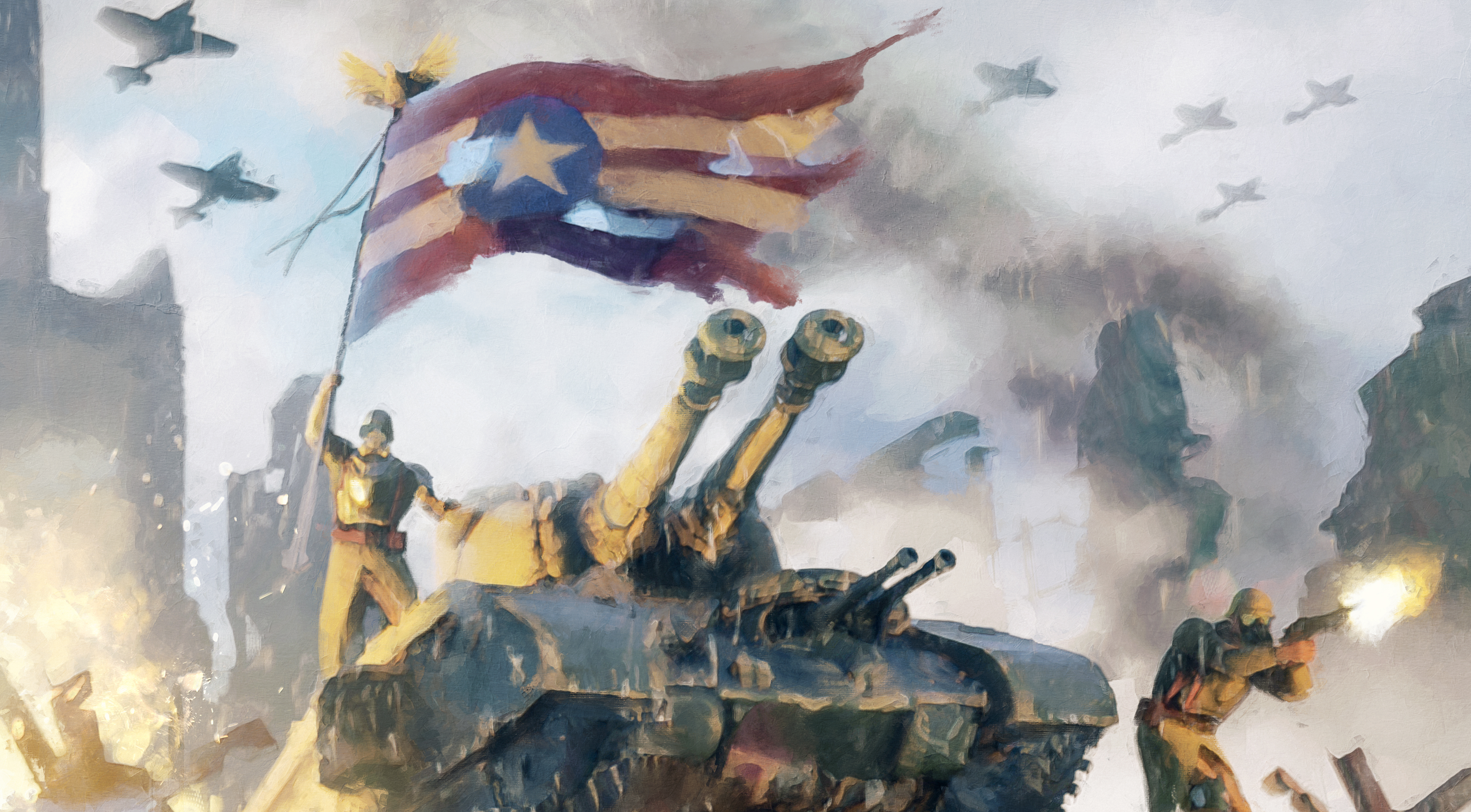The Siege of Vladimirovka
Having crushed the Russian Pacific Fleet, the Japanese Navy blockaded enemy positions in the Seas of Japan and Okhotsk. The Kuril Islands were easily suppressed, however a Russian division managed to entrench itself on the island of Sakhalin, fortifying the regional capital at Vladimirovka. With limited defenses and mountainous geography on their side, the Russians, under the command of Military Governor Kamil Golubev, were able to fend off initial incursions by Japanese Marines. In response to repeated failures, the Imperial Army was deployed to the Ainu village at Maoka on the western side of the island.
The Japanese Army was led into the mountainous interior of the island by Sipporera, a local Ainu hunter who had previously led men from his village in clashes against Russian miners. While the terrain was hazardous, the Japanese expedition crossed the range with minimal losses, catching the Russian encampment at Dolinsk off-guard. The expeditionary force arrived on the northern outskirts of Vladimirovka on December 14th, encircling the city in coordination with Marines in the south. The city’s already modest supplies quickly dwindled, and many Ainu militants gathered to aid the siege. Golubev’s troops were running out of options.
On the night of January 28th, Kamil Golubev’s army sallied out of the city. His hope was to break the northern siege lines while they slept. Even when caught off guard, the combined forces of the Ainu and the Imperial Army were able to defeat the Russian sneak attack. While Golubev’s numbers were unknown, they claimed two thousand lives in the initial raid. The morning after the failed attack, the remaining population in Vladimirovka surrendered.
After returning to Maoka, Sipporera presented the head of Governor Golubev to the venerable General Nogi Maresuke. This gesture played to the old traditions of the samurai caste, and impressed the general. Nogi’s testimony of Ainu contributions in the siege greatly aided the incorporation of the Ainu into Japanese society after the war. Following the annexation of Sakhalin, Sipporera was rewarded with land holdings in northern Vladimirovka. His family was also nominally elevated to samurai status, taking the surname Toyohara, the new name of his city. To this day the Toyohara domain remains the newest land holding privately owned by a Bushi clan, a privilege largely curtailed by the growing power of the heimin caste.
Included under Conflict
Conflict Type
Siege
Start Date
September 13th, 1904
Ending Date
January 29th, 1905




Comments